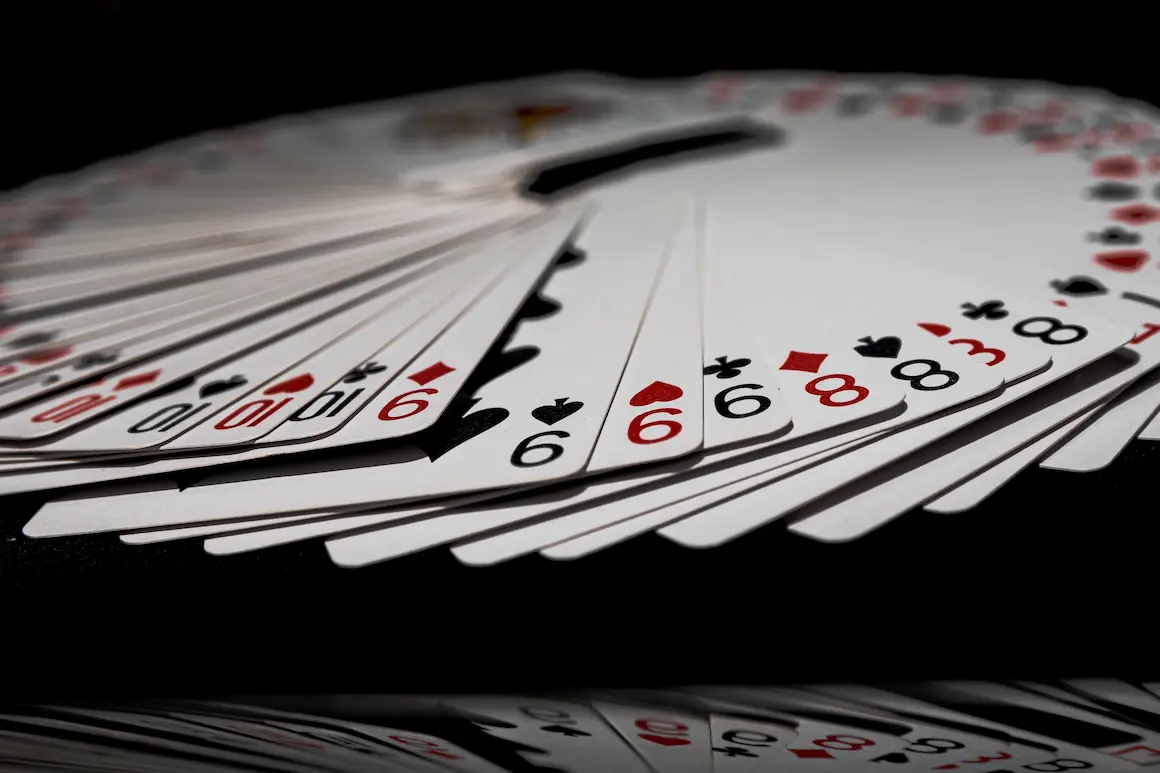The topic of this article is the poker term Ante. We will try to describe in simple words what kind of bet it is and how its approximate size is calculated. Let’s find out what its features are and how exactly the presence of Ante can affect the poker playing style.
Below we will tell you which of the types of poker you can come across Ante, how it differs from the small and big blinds, and also find out why it is needed at the gaming table.
In fact, the concept of Ante has almost become a catchphrase and is used regardless of poker itself – for example, the idiom “up the ante” means an increase in the value of an event, object or the importance of the situation.
What is ante in poker?

Let’s start with the basics – Ante is a blind, forced bet that each of the participants of the table must make, regardless of whether they will participate in the distribution or decide to fold their cards. Ante is involved in the formation of the overall bank of the game. It can also be considered a kind of distant relative of the buy-in since this bet is a payment for participation in a certain game.
The ante bet is made, as we said above, blindly – before any of the players has seen their cards and cannot assess the strength of their starting hand. After making an ante contribution to the pot, participants evaluate their cards and can make further decisions.
Note that the presence of an ante does not exclude mandatory bets such as the small and big blinds, although often, the Ante bet is introduced in poker variants where there are no blinds in the rules.
Ante size
As for the size of the ante bet – most often, it is ten or twenty percent of the minimum bet set at a certain table. Also, the ante can be equal to one-eighth or one-fourth of the small blind.
But it is worth noting that the amount of the bet or the so-called ante contribution is variable. Sometimes ante can exceed the size of the big blind at the table.
Difference between Ante and Blinds
As we said above, antes and blinds are not mutually exclusive bets. They are not often used together, but if the blinds are confirmed by the rules of poker, they are made after the ante and also blindly.
That is, the players place an ante, and after that, the two players sitting to the left of the button place small and big blinds. And here is the difference: the ante is a mandatory bet for everyone, and the blinds are only for two participants in the table.
Features of antes in poker

Ante can be found in such types of poker as Razz poker, five-card stud, seven-card stud and seven-card stud hi-lo. All of these games have no blinds. And it is at the expense of the ante that the initial bank of the game is collected.
But in such variations as Texas Hold ’em and Omaha Hold ’em, where blinds are a mandatory part of the game, the ante is an acceptable but not set rate and is often introduced in the final stages of major tournaments. This is done in order to shake the participants up by making their playing style less cautious and to increase the bank, stimulating players to fight.
Note that since 2006, the program of WSOP has included a charity tournament with an ante of five thousand dollars, which is called “Ante Up for Africa”.
Antes in poker – tactics and style of play
Professional players justifiably argue that poker with ante changes the usual tactics of games with blinds. Due to the fact that in each subsequent game, a mandatory fee is charged from the participants, the tight format of the game is losing its relevance. And deciding to sit back and fold cards when you’re not very sure about them can hit your finance hard. So it’s worth adding some aggression to your tactics.
When your opponents are playing tight, it is possible to say that you’re lucky. Experienced poker players advise raising even before the flop, and if the other participants fold their cards, you will get not only the blinds but also the ante itself in the game pot. Under such circumstances, you can afford to bluff.
When playing with antes against aggressive players, it is better to be careful. And make decisions after the flop. And join the draw if you have a chance to strengthen the cards.
Of course, the number of table participants should also be taken into account – after all, if the ante was paid by nine players, then the size of the pot stimulates the game very much and sometimes justifies the risks. And closer to the final, when there are not so many opponents, these contributions are significantly reduced. You should consider whether it is worth risking if you have a weak combination.
To conclude, let’s go over the basics again. Ante is a blind, mandatory, or in other words, forced bet, it is made before the players see their pocket cards. Antes are paid by all participants of the table without exception.
Most often, the ante is present in those types of poker where there are no blinds, but both types of bets are not mutually exclusive. The ante serves to form the pot of the game and is equal to one-fourth or one-eighth of the small blind, although there are exceptions when this bet can exceed the size of the BB – the big blind.
Adding an ante increases the pot of the game, encouraging players to fight more aggressively. Ante poker is quite dynamic. The presence of this bet changes not only the number of winnings in case of victory but also the usual tactics of behaviour at the table. The option of sitting back and playing tight can cost the player a lot of money.
Popular phrases with the word “ante”

The phrase “up the ante” has become part of the English language. It means an increase in value, both from a financial point of view, and simply emphasizes the importance of something.
The expression “ante off” is used when a player is not at the table, and the ante, in turn, continues to be charged each hand. As a result of this, the ante leads to the loss of all the player’s chips.
Ante in poker may seem like something insignificant, small. Its size seems smaller in comparison to spectacular full-stack moves. But there are no small things in poker. Winning many small situations constitutes the final win rate.
Mandatory bets form the initial pot, fuel interest in the game and force a change in strategy. Keep this in mind, and forced contributions from your opponents will add to your stake.
He/Him
19
350 articlesKristaps is an expert in the field of online casinos. Since the age of 20, he has been interested in casino games; poker and blackjack are his favorites. Thanks to his studies and work experience, he has found himself a gambling critic and analyst. He likes to share his own authentic experience with the audience, so his articles are very informative. Kristaps' lifelong dream is to participate in a poker tournament in Las Vegas.
Nationality
latvian
Lives In
Latvia
University
University of Latvia
Degree
International Marketing and Advertising
More info on Kristaps Gauja






 kristaps.gauja@casinobaltics.com
kristaps.gauja@casinobaltics.com 
